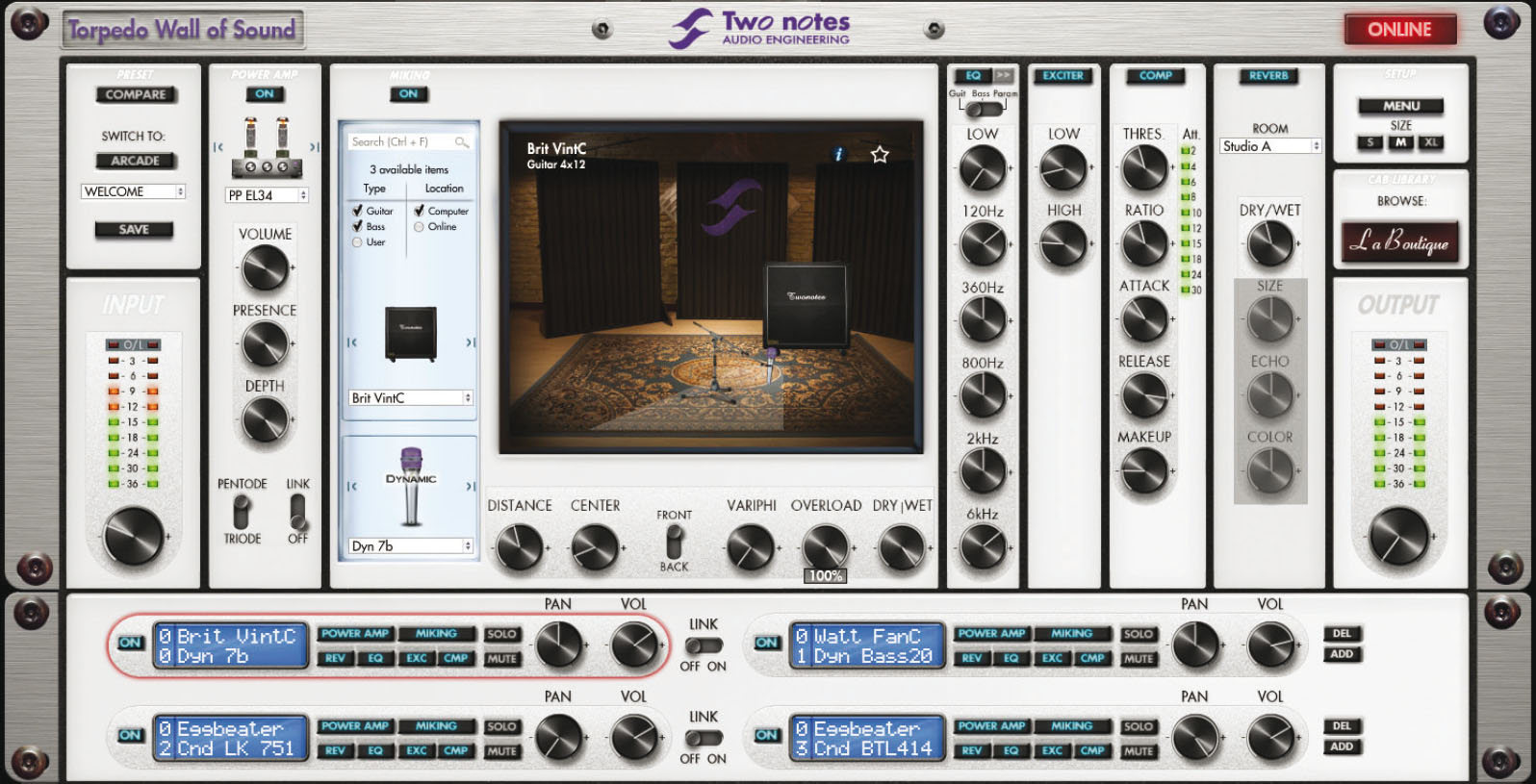
Recent schedule changes have given me the opportunity to make a lot more music. There was a period during lockdown when I was recording or editing a remote music project every evening for about two months. My primary instrument is the electric guitar – trying to record this with a toddler asleep in the next room can be tricky. Guitar amps are big and loud and not really appropriate for home recording in a small study. This is where the Audient Sono comes in.
The Sono is a 2-in/4-out audio interface (expandable to 10-in via ADAT), specifically aimed at guitarists. As with all Audient interfaces, it features two of their excellent preamps that are the same ones found on their large mixing consoles. The first channel also features a valve preamp to create the natural harmonics and tone that a valve amplifier would usually offer. For guitarists, this is accessed on the front of the interface, but the microphone input can also be routed via the valve if you want to capture the analogue warmth of the valve on any other sound source.
To complement the valve preamp, the Sono includes a licence for Two Notes speaker cab software. Two Notes is one of the leaders in speaker impulse responses (IRs) – the Sono has three permanently installed on the hardware and access to the complete library via the included software.
Getting started
The first thing I noticed when the Sono arrived is that the packaging, the design and the interface are all beautiful. Connection is via a USB-C cable and Audient has helpfully included an adaptor cable for the more common USB-B connection that my iMac still uses. The installation of the Sono software was relatively straightforward. However, installing the Two Notes software was much more complicated. It required installing the Wall Of Sound plugin, setting up accounts and linking to the Sono hardware, which it really wasn't very keen to do. I got it all sorted in the end – but it was not as straightforward as it could have been. I think this is a Two Notes issue rather than an Audient issue and hopefully it won't be as tricky in the future.
Making noise
The first thing I recorded using the Sono was a guide guitar part for some recording my wife and I were doing. I found that it went into overdrive more quickly than I would have expected. However, it was very easy to route signal from my guitar into the DAW via the valve and record some music.
After the main track had been captured, I reconnected my guitar via my pedal board and read the manual to properly understand what I was doing. The key factor here is that the Sono essentially has two input boosts for the guitar channel for the two stages of amplification in the valve. The first stage is the Input Control and the second stage comes after the tone controls via the Output control. By adjusting the different levels of boost that each of these controls provide, it's possible to create very clean guitars through to rich overdriven sounds. Initially I was trying to work the controls like I would on an amp with the output control quite low, whereas I needed to set the Output control a lot higher than the Input for a clean tone.
Once I had recorded all of the parts, I then began applying the Two Notes Cabs in my DAW to explore which sounded best for me. The Wall Of Sound Plugin is very powerful and allows a for a lot of tweaking. There are countless different IRs available to purchase within the plugin, but the Sono includes permanent licences for a variety of different cabs so you can explore which ones work best for you.
I began by using emulations of speaker cabs that I actually own so I know how they sound – I found them a bit darker than my real equivalents, but this was easily fixed with a bit of EQ. The speaker emulations overall were excellent and by changing the room and the type and positions of the microphones, a wide variety of sounds could be created. The combination of the valve pre and the cab IRs created some excellent guitar sounds.

The Sono includes the Wall Of Sound Plugin
Soundscape: create clean tones through to rich and overdriven timbres
Alternatives
As I mentioned, I have been doing quite a lot of recording at home of late and have access to a number of alternatives. My first solution was to wire in one of my valve amplifiers that has a post-valve DI output and record that via my regular audio interface (coincidentally an Audient interface). This worked well but sounded distinctively like that amp and always required a lot of EQ.
I also have a pedal that emulates three different guitar amps and speaker cabs that sounds incredible. However, this pedal on its own is nearly twice as expensive as the Sono and still requires connecting via the audio interface to capture the sound.
Summary
As an option for school music departments I really can't fault the Sono. The option to record guitars via the valve preamp and the high-quality mic preamps are a feature of all Audient interfaces; this interface covers all the bases that an interface for a school music computer might need. The combination of the preamp and the speaker cab IRs is excellent and was a real step up from what I was using before.
If your department has lots of guitarists who want to record themselves for their compositions or performances, but who don't have the luxury of lovely boutique guitar amplifiers, the Sono could be perfect. It allows guitarists to capture excellent sounds without compromising other recording facilities. Totally recommended.
The Sono is £219 inc.VAT. Find out more at audient.com




